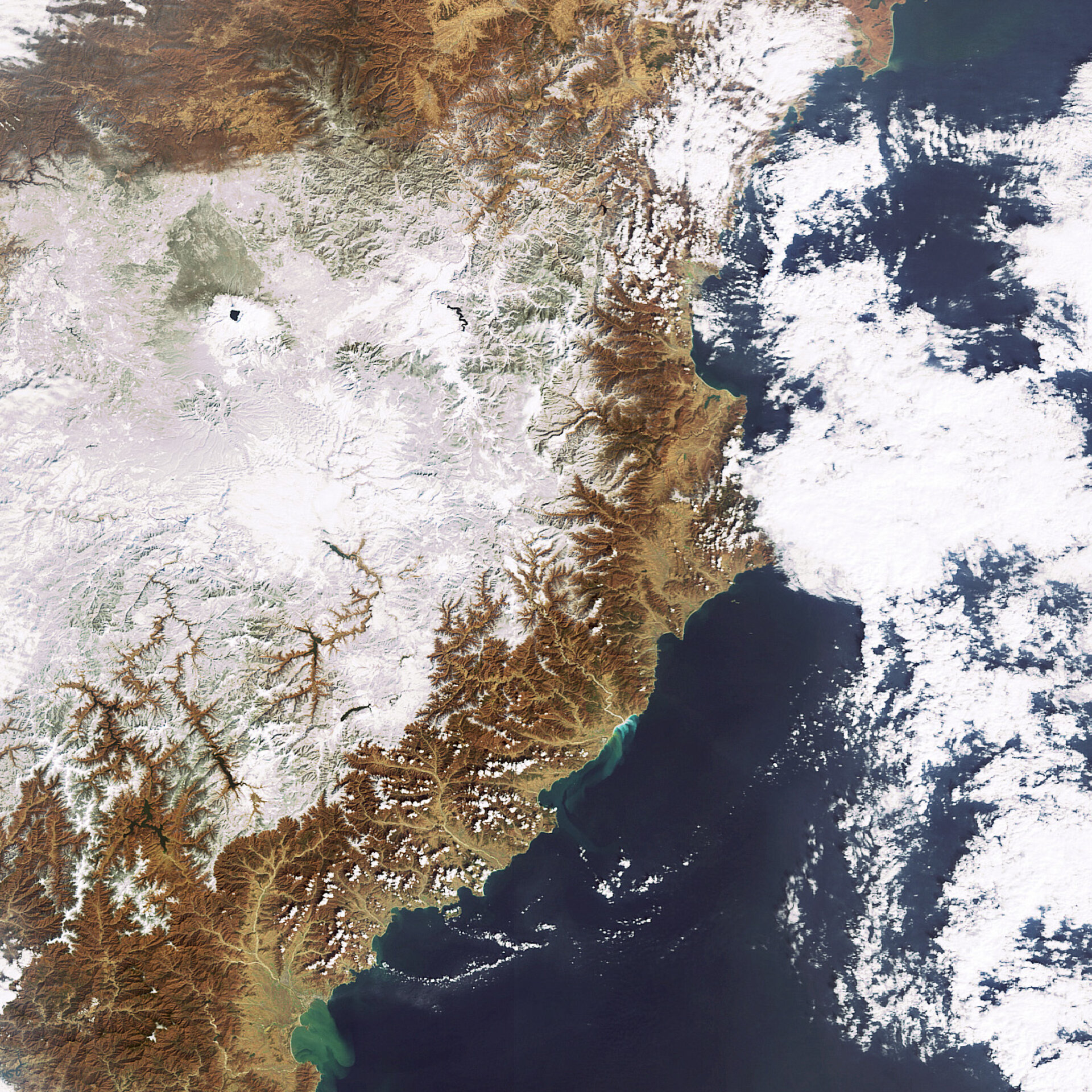Earth from Space: Mount Paektu
This Envisat image highlights Mount Paektu, the highest mountain in the Democratic People's Republic of Korea (North Korea). Mount Paektu, a volcanic mountain that has been extinct since 1702, forms part of a national border between North Korea and the People’s Republic of China.
At 2,744 m, Mount Paektu is the highest mountain of the Changbai mountain range to the north and Baekdudaegan mountain range to the south. The dark blue spot in the upper left hand corner of the image is Heaven Lake – one of the highest crater lakes in the world.
Heaven Lake has a circumference of 12 to 24 km and an average depth of 213 m. The lake is ice covered from mid-October to mid-June and is surrounded by some 16 peaks exceeding 2500 m. The mountain is the source of the Songhua, Tumen and Yalu rivers.
The central section of the mountain, which was made a biosphere reserve in 1989, rises about 3 mm every year due to rising levels of magma below the central part of the mountain.
The 966-km long Korean Peninsula is located between the Sea of Japan (East Sea) to the east (visible) and the Yellow Sea to the west. The East Sea has a mean depth of 1752 m and a maximum depth of 3742 m.
This image was acquired by Envisat's Medium Resolution Imaging Spectrometer (MERIS) instrument on 30 October 2007, working in Full Resolution mode to provide a spatial resolution of 300 metres.







